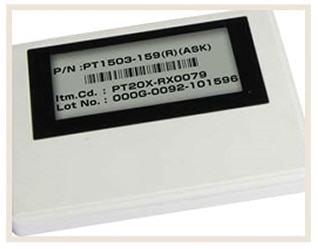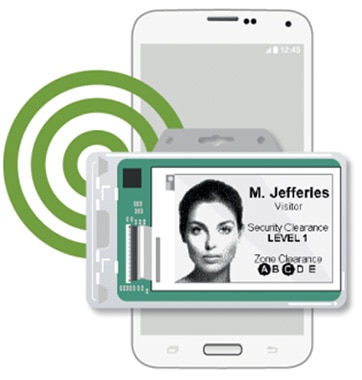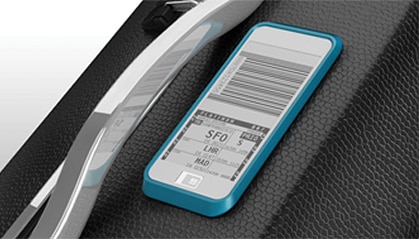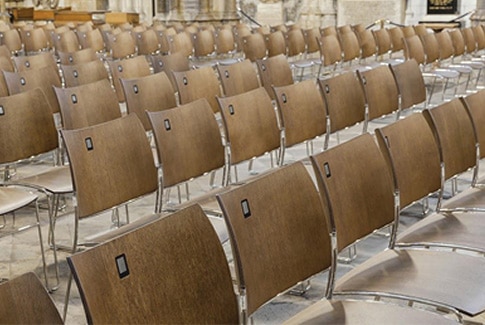New Applications Driving 13.6% CAGR for e-paper Displays Between Now and 2022
2016-08-23
A May 2016 report by Credence Research forecasts that the e-paper display market will see a compound average growth rate (CAGR) of 13.6% between 2015 and 2022. Most of us are familiar with the technology through its widespread use in e-readers, such as Amazon’s Kindle, and it’s had resounding success in retail stores. Retailers worldwide have saved billions of dollars by replacing paper shelf labels with configurable electronic paper versions. These electronic shelf labels (ESLs) mean that signage can be electronically updated with pricing or other information, including special offers, and there is now a version that displays black, red and white to add variety and impact. However, it’s the diversity of new applications, limited only by the imagination of product designers, that is driving the extraordinary growth in demand for e-paper displays.

Figure 1: Examples of electronic shelf labels (ESLs) using e-paper displays.
e-paper is a bistable technology, which means that energy is only consumed when the display is changing. Once it has changed, the display consumes no energy and continues to show information, even when disconnected from its power source. By comparison, LCD or OLED displays are far more power-hungry, needing to be refreshed around 30 times per second, even when the information on the display is not changing. What’s more, e-paper is a reflective display that doesn’t need a light source - although front lighting is an option for nighttime viewing. Backlighting is required for LCD displays and accounts for around 40% of their power consumption. So with e-paper we have a very low power, proven display technology that is easy on the eye and has the further advantage of offering wide viewing angles. In fact, e-paper displays look just like ink on paper, which is not so surprising because they contain the same pigments used in conventional ink printing. So, outside of e-readers and shelf labels, where are they being used? Here are just a few examples.
e-paper tags, cards or badges with integral wireless connectivity may have a number of technologies integrated within them, including Bluetooth and near field communications (NFC). AIOI Systems and Toppan Printing in Japan are companies making NFC-enabled smart tags that can support energy harvesting. Some can store and display up to 128 pages of information. Smart tags show information readable by people or by optical scanners, the latter including QR codes and 2D or 3D barcodes.

Figure 2: This AIOI Systems Smart Tag can store up to 128 pages of information.
Trays and boxes used to move parts around warehouses and in intralogistics, so-called ‘reusable transport items’ (RTIs), are using smart tags to reduce costs and improve efficiency. The e-paper tags may show where RTIs need to go next, streamlining warehouse picking and routing, increasing speed, and helping eliminate errors.
In biopharma (for example, human organ transportation) and food safety applications, e-paper tags are used to provide cold chain traceability and to deliver re-routing and disposal instructions. In some systems they provide closed loop feedback to verify end-to-end integrity of the whole process.
In manufacturing, tags with e-paper displays are used to improve the routing of components, sub-assemblies and finished products. They are updated with work instructions as they move through the plant and can be used to implement digital Kanban systems, to provide status updates and acknowledgements, and to display factory manifests.
Combined with location and communications technologies, the e-paper displays are appearing in devices everywhere from the shop floor to hospitals. In these applications, they improve asset utilization as part of real-time location systems.
Multitask badges with e-paper displays are now used to communicate with people too. Smart badges identify individuals, control their access to various locations, perhaps in workplaces or at events, and transmit information about their location.

Figure 3: An NFC-enabled batteryless e-paper badge.
Then there’s transportation. According to a 2016 report by SITA, an aviation technology company that tracks baggage performance of airlines, lost or delayed luggage cost the air transport industry $2.3 billion in 2015. Part of the industry’s drive to cut these losses include smart luggage tags. Sometimes the tags are built into the luggage itself; with other systems it’s attached to the luggage, typically with a secure band that wraps around the handle. Frequent flyers are finding this technology particularly valuable because the smart luggage tags are automatically formatted from the boarding pass on a smartphone over a wireless link. For example, DS-Tags developed the BAGTAG as a secure, airline-independent device, which supports interlining (transfers between airlines). It consists of a secure electronic bag tag device, a secure cloud-based travel document delivery services platform and a dedicated airline software development kit for storing travel documents and transferring bag tag data to the BAGTAG device. The BAGTAG enables an estimated 85% faster baggage drop-off process at airports.

Figure 4: Using the BAGTAG means 85% faster bag-drop at airports.
e-paper is also being used for signage in public spaces, for control system displays (including domestic and industrial thermostats), and even in seating. Casala used a batteryless e-paper chair numbering and identification system from Zifra for the chairs it recently supplied to London’s Westminster Abbey. The display, which is engineered by Mpico, is configured with a handheld remote control and can show row number, seat number or logos.

Figure 5: Casala’s smart seating in Westminster Abbey uses batteryless displays to show seat numbers, row numbers or logos.
Lastly, in one of the most innovative energy-harvesting applications you’ll ever see, Finnish company Paulig has come up with a smart coffee cup that has a built-in e-paper display. The power source is heat from the coffee and users simply download their own pictures onto the screen from a smartphone app that communicates over Bluetooth. The app enables multiple images to be set up in a queue and then sent to the coffee mug. You can also send images to friends’ mugs when you join the online user community. Pure fun, but why not?

Figure 6: The Paulig Muki mug e-paper display is powered by the heat from coffee.
With such a wide variety of emerging applications, even Credence Research’s growth estimate may prove to be a conservative one.
Pervasive Displays parts for your design are available from DigiKey. These parts include a variety of display modules, evaluation boards and kits, evaluation expansion kits, and an RF evaluation development kit.
聲明:各作者及/或論壇參與者於本網站所發表之意見、理念和觀點,概不反映 DigiKey 的意見、理念和觀點,亦非 DigiKey 的正式原則。






